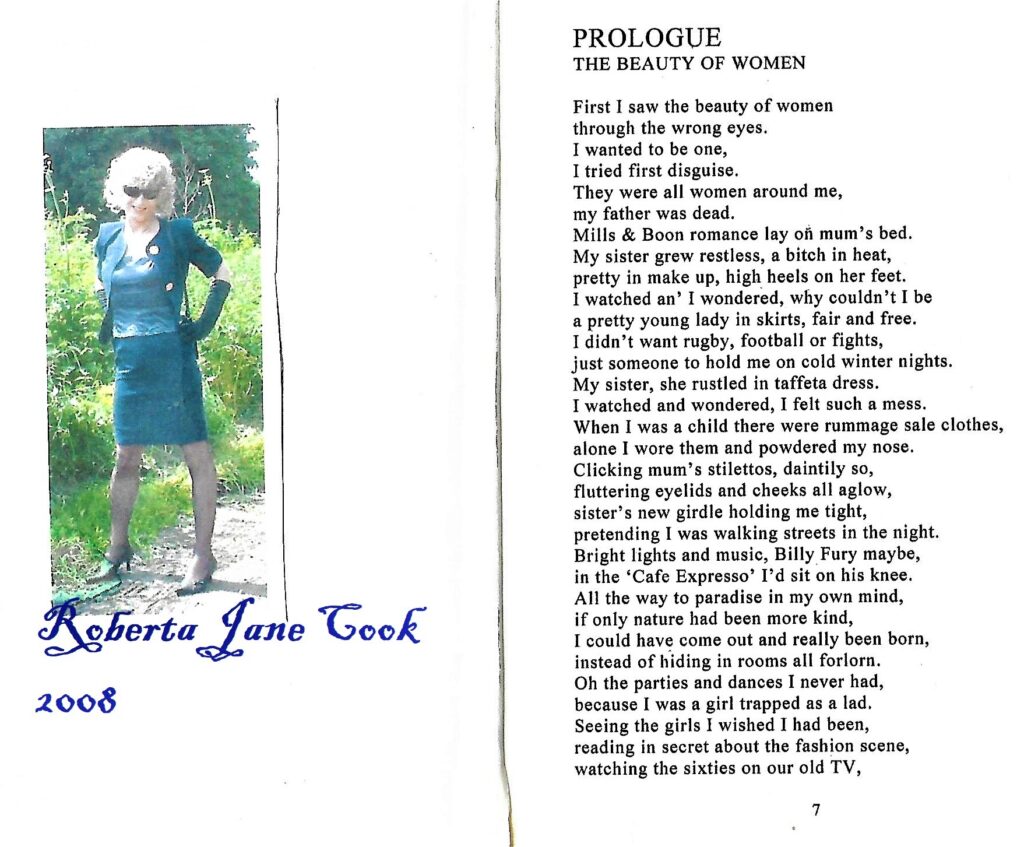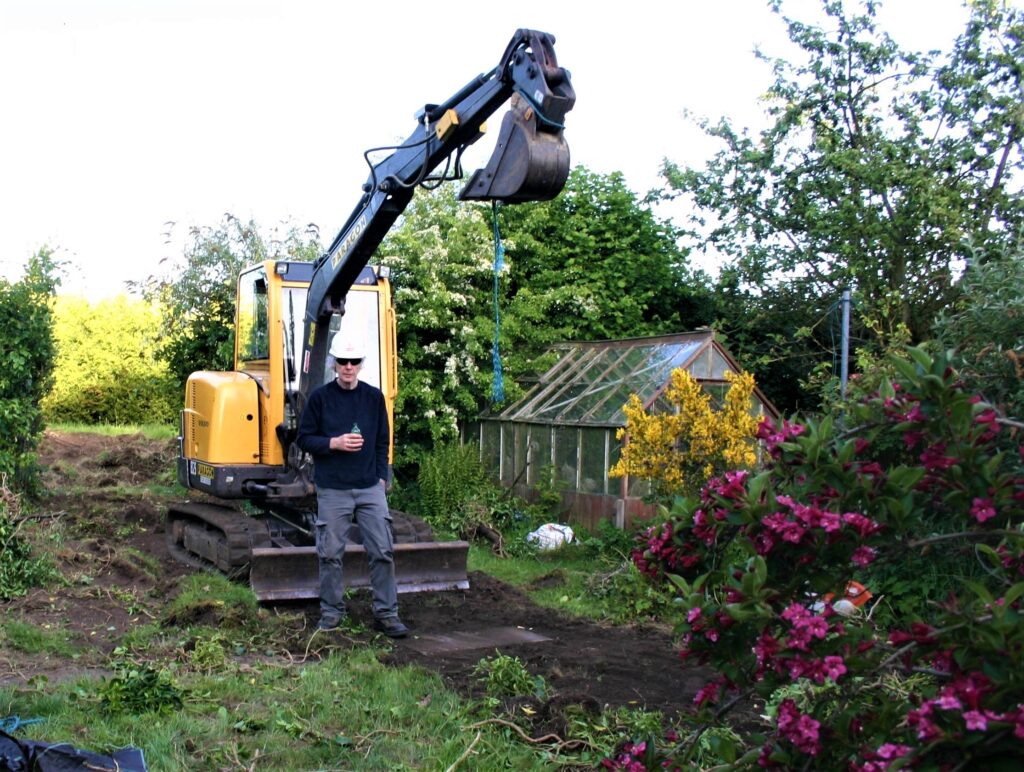Roberta Name Meaning in English
- What is the lucky number of Roberta? The lucky number associated with the name Roberta is “7”.
- What is the meaning of Roberta? The meaning of name Roberta is “Bright fame”.
- What is the name LENGTH of Roberta? The Name Roberta consists of 7 alphabets.
January 17th 2023
INEVITABILITY
As my suicide seems increasingly inevitable , I am posting the following as an aide memoir to an option. I would have succeeded on December 19th 2016 had if it had not been for quick action by the local community Police Constable who meant well. I have also added research papers on suicide. A neuro surgeon acquaintance told memay years ago in 2005, that it is a relatively painless method. He believed I was researching a book. He said : ‘The brain is basically a box of neurons. Drowning makes it explode.
Forensic Science International: Reports
Volume 3, July 2021, 100190

Forensic Pathology Complex suicide by drowning and self-strangulation: An atypical “holy” way to die
Author links open overlay panel
https://doi.org/10.1016/j.fsir.2021.100190Get rights and content
Under a Creative Commons license
Open access
Highlights
•
Complex suicide is defined as the combination of two or more suicide methods.•
The detection of multiple lethal methods can complicate diagnosis.•
Knowledge of the cultural background of the victim may help to explain such cases.
Abstract
About 1.5–5% of suicides are committed in a complex way. The present paper reports the case of a 72-year-old man who committed suicide by throwing himself into the sea after tying a large stone with a rope and tying the other end with a slipknot around the neck. The postmortem analysis revealed asphyxia as that the cause of death, resulting in a combination of strangulation and drowning. Even if the prevalence of different means of suicide changes widely among different reports, there is a lack of evidence of such a combination in the scientific literature. Surprisingly, in the catholic tradition, several martyrs died by combination of drowning and strangulation. The gospels of Luke and Matthew also describe this particular combination of lethal means, which was also represented in several Renaissance paintings showing the martyrdom of saints. Here we describe the forensic pathological findings of the case that we report, and we make some hypotheses to interpret the possible influence of literary and iconographic representations in the choice of lethal means.
Previous article in issueNext article in issue
Keywords
Complex suicide
Self-drowning
Self-strangulation
Introduction
The annual mortality rate for suicide has been estimated by the World Health Organization (WHO) to be 10.7 per 100,000 individuals worldwide, representing one recurrent variety of unnatural death [1]. Due to varying reliability in the recording of deaths, as well as the economic and cultural differences, suicide rates diverge as much as ten-times within and between countries [2].
The prevalence of different suicide methods varies widely among different states, regions, genders, and is also influenced by socio-economic conditions. Among the main drivers in the choice of suicide method are: the availability and lethality of harmful tools, and socio-cultural acceptability [3], [4], [5], [6]. For example, suicides in the US most commonly occur using firearms, (61% of male and 36% of female suicides), while in European males, who normally do not possess firearms, the most common method is by hanging (33% in Finland to 91% in Poland). In Swiss males, who take their firearms home while performing military service, the most common suicide method is by firearm (34%), just like in the US [7]. In Italy, hanging is the most common suicide method, followed by fall from height, drowning, and use of firearms [8].
According to Marcinkowski, suicides should be divided into simple and complex, depending on the number of suicide methods employed [9], [10]. About 1.5–5% of all committed suicides show a combination of multiple self-harm approaches, and are defined as complex suicides [11]. Complex suicides have been classified into:1.
Primary or planned complex suicide: the victim chooses a complex suicide from the beginning, maybe to ensure that one of the suicide methods will, at least, succeed.2.
Secondary or unplanned complex suicide: the victim switches from one method to another after the first has failed, has proved to be excessively painful, or has required too much time to cause death [12], [13].
However, the so-called “complicated suicide” occurs when the first suicide method fails, but death results owing to a subsequent traumatizing event that occurs by accident [14], [15].
According to the incidence of each suicide method, planned complex suicides have been further divided into “typical” i.e. associations of two common methods, and “atypical” ones that present rare combinations or a coincident use of more than two suicide means. The frequency of each suicide method used in complex suicide does not differ from the one measured for non-complex suicide [16].
Because the presence of several different wounds is strongly associated with homicide, the high variety of injuries often found in complex suicides can make the differential diagnosis between homicide and complex suicide difficult [17]. To establish the manner of death in such cases it is essential to achieve a complete reconstruction of the events, a careful inspection of the scene of death, as well as a thorough autoptic, toxicological and histopathological examination. Hence complex and complicated suicide frequently represent a difficult challenge for forensic pathologists [18].
Case
In June 2020, in a small town in southern Italy, a 72-year-old man was found floating in the sea near the beach with a slipknot around his neck. The sea was shallow and full of rocks, while the beach was sandy, with several large white stones all along the seaside but far from the shore. The body, the rope, and the clothes were completely wet (Fig. 1). The body presented large wounds, congestion and petechiae on head and face. There was a hematoma on the right eyebrow, with a small cut on its lateral edge, and some little ecchymosis on the chin. The slipknot was on the anterior part of the neck, and the mark was deepest on its posterior part. There was a single transverse ligature mark that completely encircled the neck without gaps. The ligature mark was 6 cm higher than the jugular notch on the anterior part, and 10 cm lower than the external occipital protuberance on the posterior one. The anterior part of the mark traced the shape of the slipknot. A red-tinged froth exuded from the mouth. The body did not show any sign of maceration. The police found that the victim left his home around two hours before the body was found.

At one extremity of the 42 cm long rope a noose with a simple slipknot was tied around the neck, while three loops were fixed by a triple bowline knot on the other. The loops varied in circumference and diameter, ranging from 65 to 95 cm and 20–30 cm, respectively (Fig. 2).

The autopsy was carried out after 24 h. The hematoma on the right eyebrow and the ecchymosis on the chin showed signs of vitality, while the wounds on the nose, chin, and left side of the head and face showed the absence of soft tissue hemorrhages along with the lack of a significant microscopical vital reaction. Internal examination showed a bite mark on the left edge of the tongue, and hemorrhages in the right ala and left superior horn of thyroid cartilage, sternocleidomastoid and paravertebral muscles (Fig. 3). We found froth and water in the airways. The lungs presented anthracosis and emphysema aquosum, and they almost covered the heart and met in the middle. The gastric content was 200 ml of fluid, with scarce food residues. The brain parenchyma was congested and edematous. The lesions to the head were maybe inflicted by the rocks on the seabed.

Nevertheless, the manner of death remained unclear until the police found a large white stone lying on the sea-bottom just a few meters far from the shore as they were coming away from the beach. The police investigation also found out that the victim suffered from depression. According to the testimony of his wife, the victim left home around 10:00 a.m., the body was found almost one hour later. At that time, in summer, the beach was very crowded, but no one heard or saw anything strange.
Toxicological findings included: alcoholaemia 0,01 g/L; negative results for any of the tested substances (cocaine, opiates, barbiturates, buprenorphine, methadone, cannabinoids, oxycodone, meperidine, tramadol, levorphanol, methorphan, levamisole, atropine, paracetamol, haloperidol, bipyridine, lidocaine, and pesticides).
According to the autopsy findings and post-mortem analysis, death was caused by asphyxia, resulting in a combination of strangulation and drowning. Thanks to the ancillary information and the results of the post-mortem examination, and toxicological findings, the manner of death was established as suicide (ICD-10-CM: X71.3 and X70).
Discussion
This report shows a rare type of complex suicide carried out by a combination of drowning and self-strangulation. The hypothesis that the present was a case of homicide has been excluded because: (a) there were no signs of victim’s resistance or signs of binding the arms, wrists, or legs; (b) toxicology tests proved negative for alcohol and drugs that could have impaired the defense of a presumably reluctant victim. Moreover, the beach was crowded but no one witnessed any aggression. From a pathological point of view, the ligature mark was single and unequal, having the shape of the slipknot on the anterior part while the posterior one was deep and uniform. This means that the noose was tightened from the front of the victim: carrying out a strangulation in such a way would be uncomfortable for any hypothetical murderer.
Furthermore, the victim presented an history of depression which has long been associated with suicide [19], [20], [21]. Several studies demonstrated that older adult males have the highest suicide mortality rates compared with other age-gender groups [22], [23], [24].
Considering all the data and findings, this case can be defined as a primary complex suicide. A possible hypothesis is that the victim prepared the rope, tied the stone, and throwed himself into the sea to combine self-drowning and self-strangulation.
Drowning is defined as a primary respiratory impairment from submersion in a liquid [25]. The whole process ordinarily takes seconds or a few minutes to cause death [26]. Even if there are no established diagnostic features for drowning, many findings (fluid aspiration inside the lungs, the internal and external airway foam, the fluidity of gastric content) suggested that the victim was still breathing when he submerged [27], [28].
Strangulation is a type of mechanical asphyxia produced by constriction of the neck through a ligature, with a force different from bodyweight [29]. Mechanical airways occlusion normally requires pressure of almost 15 kg (147 N), due to the resistance of the trachea cartilage [30]. A pressure of 3.2 kg (31.36 N) is enough to occlude the artery system of the neck, while that exerted by 2 kg (19.6 N) is sufficient to close the venous system [31]. The vagal reflex requires even weaker pressure, causing bradycardia or cardiac arrest. In the presented case, local neck injuries, facial congestion, facial hemorrhage, and the tongue edge lesion suggested strangulation [32], [33].
The three loops on the free extremity of the rope appeared suitable for tying an object (e.g. a stone), but unnecessary for homicidal strangulation. A large stone was found on the sea bottom near the body and was recovered by police, it weighed 14.3 kg. According to the Italian Soil Protection Department, the shore stones of that particular region are prevalently made of limestone sedimentary rock, which density ranges from 2.1 to 2.7 kg/L [34], [35]. So, the lower limit of the stone’s volume is about 5.32 L. As seawater density is SICURO??? around 1 kg/L, according to Archimedes’ principle, a buoyant force around 52.14 N was exerted on the stone, while the weight force exerted by the stone was at least 140.73 N. Finally, a resulting weight force about 88.59 N (corresponding to a mass of 9.04 kg) was exerted on the victim’s neck. Additionally, the buoyant force pushing the victim’s body towards the surface, helped tighten the noose. Hence, as long as the stone was not touching the bottom, the self-strangulation could have been effective even in water (Fig. 4).

The most important issue for pathologists is to establish manner of death, however, it is difficult to present a conclusive answer in this case. Whether death occurred due to self-strangulation or drowning as well as the events sequence is a question that still remains unanswered. The presence of signs of both mechanisms suggests that they may have acted almost simultaneously and with comparable causal relevance.
The combination of self-strangulation and drowning is unusual. Our literature review did not find any other similar case. According to an international study, considering suicide methods, mortality per 100,000 people for suicide by drowning ranges from 0.02 in Mexico to 0.96 in Ireland [36]. Muccino et al. reported that drowning incidence among the different countries ranges from 3% to 26% of the total amount of suicides [37]. Self-strangulation is so seldom that many authors believe that it is not even possible, even if some examples have been described in the forensic literature [17], [38], [39]. With regard to complex suicide, Italian records stated that in Milan the most frequent combination is plastic bag suffocation and inert gas inhalation (22.6%, 12/53 cases) while in the Ligurian region, wrist cutting followed by hanging (unplanned in each case) was the most recurrent combination (42.1%; 8/19 cases) [13], [14]. Therefore the presented case represents an atypical complex suicide.
Regarding the present case, a hypothesis about the decision-making process is that the victim used a sort of ballast to keep himself underwater. Perhaps considering the shallow water and the instinct to re-emerge, he tied his neck with a slipknot to accomplish self-strangulation.
Surprisingly, even if in the scientific literature we did not find any other case similar to the one here reported, in the catholic tradition there are many references to people who threw themselves or were thrown by others, into the water with a stone tied to the neck. Indeed, in Luke and Matthew’s gospels, Jesus Christ mentions such a cruel mechanism of death: “Things that cause people to stumble are bound to come, but woe to anyone through whom they come. It would be better for them to be thrown into the sea with a millstone tied around their neck than to cause one of these little ones to stumble.” (Luke 17:1-2) [40]; “If anyone causes one of these little ones—those who believe in me—to stumble, it would be better for them to have a large millstone hung around their neck and to be drowned in the depths of the sea.” (Matthew 18:6) [41]. It is also handed down that even three classical holy martyrs (Saint Florian, Saint Pantaleon from Nicomedia, and Saint Rufino) died that way, due to Roman oppression and persecution. Some of those episodes have been portrayed (Fig. 5).

Considering that catholic tradition is widespread in Italy, it is conceivable that the victim was aware of these Gospel passages or martyrs’ stories, or, at the very least, had heard about them. Several predictors of suicide, including psychiatric disorders, have been evidenced in the scientific literature [42]. However, there is not an unequivocal opinion about practicing religion and suicide, in fact several studies report religion to be protective against suicide, others found it to be a risk factor, and others a neutral factor [43], [44], [45], [46]. This may be due to the complex relationship between spirituality and behavior. Indeed, a 2016 review showed that different religious affiliations provide a different degree of protection or risk (e.g. religion can connect to the community and help the socialization, but adhering to a minority group, or feel guilty about something might conduct to isolation) [47].
In the catholic tradition, the combination of drowning and strangulation is roughly described as a painful and slow way to die (even if it is not true). However, trying to feel less pain does not seem to be one of the major drivers in the choice of suicide method. For example, in Iranian females, one of the common methods of suicide is self-immolation, which appears a very painful and slow way to die [6].
Conclusion
This report highlights problems and possible medico-legal solutions in case of complex suicide. A careful pathological examination may be not enough to understand the sequence of events. Toxicological and histological examinations, a thorough examination of the crime scene, and the full acquisition of ancillary information are essential, especially to rule out the possibility of homicide.
CRediT authorship contribution statement
Marcello Benevento: Writing – original draft (with the contribution of all the authors). Gabriele Mandarelli: Writing – review & editing. Davide Ferorelli: Writing – review & editing. Silvia Trotta: Writing – review & editing. Giampiero Bottari: Writing – review & editing. Cristina Caterino: Writing – review & editing. Biagio Solarino: Supervision.
Declarations of Competing Interest
The authors declare that they have no known competing financial interests or personal relationships that could have appeared to influence the work reported in this paper. This research did not receive any specific grant from funding agencies in the public, commercial, or not-for-profit sectors.
Acknowledgments
We thank Dr. Samantha Austen for grammar and language revision.
References
S. Bachmann
Epidemiology of suicide and the psychiatric perspective
Int. J. Environ. Res. Public Health, 15 (2018), pp. 1-23, 10.3390/ijerph15071425
World Health Organization
自殺を予防する -世界の優先課題―Preventing Suicide: A Global Imperative
WHO Press,, Geneva (2014)
K. Kõlves, M. McDonough, D. Crompton, D. de Leo
Choice of a suicide method: trends and characteristics
Psychiatry Res., 260 (2018), pp. 67-74, 10.1016/j.psychres.2017.11.035
Download PDFView Record in ScopusGoogle Scholar[4]
M. Sarchiapone, L. Mandelli, M. Iosue, C. Andrisano, A. Roy
Controlling access to suicide means
Int. J. Environ. Res. Public Health, 8 (2011), pp. 4550-4562, 10.3390/ijerph8124550
View Record in ScopusGoogle Scholar[5]
A. Huisman, C.A.J. van Houwelingen, A.J.F.M. Kerkhof
Psychopathology and suicide method in mental health care
J. Affect. Disord., 121 (2010), pp. 94-99, 10.1016/j.jad.2009.05.024
Download PDFView Record in ScopusGoogle Scholar[6]
M. Rostami, A. Jalilian, R. Rezaei-Zangeneh, A. Salari
Factors associated with the choice of suicide method in Kermanshah Province, Iran
Ann. Saudi Med., 36 (2016), pp. 7-16, 10.5144/0256-4947.2016.7
View Record in ScopusGoogle Scholar[7]
V. Ajdacic-Gross, M.G. Weiss, M. Ring, U. Hepp, M. Bopp, F. Gutzwiller, W. Rössler
Methods of suicide: international suicide patterns derived from the WHO mortality database
Bull. World Health Organ, 86 (2008), pp. 726-732, 10.2471/BLT.07.043489
View Record in ScopusGoogle Scholar[8]
C. Crestani, V. Masotti, N. Corradi, M.L. Schirripa, R. Cecchi
Suicide in the elderly: a 37-years retrospective study
Acta Biomed., 90 (2019), pp. 68-76, 10.23750/abm.v90i1.6312
View Record in ScopusGoogle Scholar[9]
T. Marcinkowski, L. Pukacka-Sokolowska, T. Wojciechowski
Planned complex suicide
Forensic Sci., 3 (1974), pp. 95-100, 10.1016/0300-9432(74)90013-2
Download PDFView Record in ScopusGoogle Scholar[10]
S. Racette, A. Sauvageau
Planned and unplanned complex suicides: a 5-year retrospective study
J. Forensic Sci., 52 (2007), pp. 449-452, 10.1111/j.1556-4029.2007.00387.x
View Record in ScopusGoogle Scholar[11]
M. Kaliszan, K. Karnecki, E. Tomczak, T. Gos, Z. Jankowski
Complex suicide by self-stabbing with subsequent drowning in the sea
J. Forensic Sci., 58 (2013), pp. 1370-1373, 10.1111/1556-4029.12229
View Record in ScopusGoogle Scholar[12]
P.A. Peyron, T. Casper, O. Mathieu, Y. Musizzano, E. Baccino
Complex suicide by self-stabbing and drowning: a case report and a review of literature
J. Forensic Sci., 63 (2018), pp. 598-601, 10.1111/1556-4029.13537
View Record in ScopusGoogle Scholar[13]
G. Gentile, N. Galante, S. Tambuzzi, R. Zoja
A forensic analysis on 53 cases of complex suicides and one complicated assessed at the Bureau of Legal Medicine of Milan (Italy)
Forensic Sci. Int., 319 (2021), Article 110662, 10.1016/j.forsciint.2020.110662
Download PDFView Record in ScopusGoogle Scholar[14]
R. Barranco, C. Diana, F. Ventura
Forensic pathological study of complex and complicated suicides: a twelve-year case series in Genoa (Italy)
J. Forensic Leg. Med., 65 (2019), pp. 5-8, 10.1016/j.jflm.2019.04.007
Download PDFView Record in ScopusGoogle Scholar[15]
G. Gentile, M. Bianchi, M. Boracchi, C. Goj, S. Tambuzzi, R. Zoja
Forensic pathological considerations of a unique case of “complicated suicide”*,†
J. Forensic Sci., 65 (2020), pp. 2184-2187, 10.1111/1556-4029.14519
View Record in ScopusGoogle Scholar[16]
F. Simonit, F. Bassan, C. Scorretti, L. Desinan
Complex suicides: a review of the literature with considerations on a single case of abdominal self stabbing and plastic bag suffocation
Forensic Sci. Int., 290 (2018), pp. 297-302, 10.1016/j.forsciint.2018.07.027
Download PDFView Record in ScopusGoogle Scholar[17]
M. Bohnert
Complex suicides
Forensic Pathol. Rev., 2 (2005), pp. 127-143, 10.1385/1-59259-872-2:127
A. Banchini, M.L. Schirripa, L. Anzillotti, R. Cecchi
Planned and unplanned complex suicides: casuistry of the Institute of Legal Medicine of Parma (Italy)
Leg. Med., 29 (2017), pp. 62-67, 10.1016/j.legalmed.2017.10.005
Download PDFView Record in ScopusGoogle Scholar[19]
K. Hawton, C. Casañas, I. Comabella, C. Haw, K. Saunders
Risk factors for suicide in individuals with depression: a systematic review
J. Affect. Disord., 147 (2013), pp. 17-28, 10.1016/j.jad.2013.01.004
Download PDFView Record in ScopusGoogle Scholar[20]
S.M. Rice, D. Kealy, J.L. Oliffe, J.S. Ogrodniczuk
Male-type depression symptoms linked to broader psychopathology
J. Affect. Disord., 235 (2018), pp. 523-524, 10.1016/j.jad.2018.04.062
Download PDFView Record in ScopusGoogle Scholar[21]
J.L Oliffe, E. Rossnagel, Z.E. Seidler, D. Kealy, J.S. Ogrodniczuk, S.M. Rice
Men’s depression and suicide
Curr. Psychiatry Rep., 21 (2019), p. 103
View Record in ScopusGoogle Scholar[22]
I. Conejero, E. Olié, P. Courtet, R. Calati
Suicide in older adults: current perspectives
Clin. Interv. Aging, 13 (2018), pp. 701-712, 10.2147/CIA.S130670
View Record in ScopusGoogle Scholar[23]
D. De Leo, M. Vichi, K. Kolves, M. Pompili
Late life suicide in Italy, 1980–2015
Aging Clin. Exp. Res., 32 (2020), pp. 465-474, 10.1007/s40520-019-01431-z
View Record in ScopusGoogle Scholar[24]
P.J. Raue, A.R. Ghesquiere, M.L. Bruce
Suicide risk in primary care: identification and management in older adults
Curr. Psychiatry Rep., 16 (2014), p. 466, 10.1007/s11920-014-0466-8
View Record in ScopusGoogle Scholar[25]
M. Todt, F. Ast, R. Wolff-Maras, B. Roesler, T. Germerott
Suicide by drowning: a forensic challenge
Forensic Sci. Int., 240 (2014), pp. e22-e24, 10.1016/j.forsciint.2014.04.022
Download PDFView Record in ScopusGoogle Scholar[26]D. Szpilman, J. Bierens, A.J. Handley, J.P. Orlowski, Review article, NEJM, 2012.
L. Stephenson, C. Van den Heuvel, R.W. Byard
The persistent problem of drowning – a difficult diagnosis with inconclusive tests
J. Forensic Leg. Med., 66 (2019), pp. 79-85, 10.1016/j.jflm.2019.06.003
Download PDFView Record in ScopusGoogle Scholar[28]
A. Christe, E. Aghayev, C. Jackowski, M.J. Thali, P. Vock
Drowning – post-mortem imaging findings by computed tomography
Eur. Radiol., 18 (2008), pp. 283-290, 10.1007/s00330-007-0745-4
View Record in ScopusGoogle Scholar[29]
S. Lo Pinto, T. Tacchella, F. Fossati, A. Bonsignore, F. Ventura
Self-strangulation through a sphygmomanometer: an uncommon suicide
J. Forensic Sci., 62 (2017), pp. 528-530, 10.1111/1556-4029.13278
View Record in ScopusGoogle Scholar[30]
P. Saukko, B. Knight
Knight’s Forensic Pathology
(third ed.), CRC PRess (2004), 10.1201/b13642
G.L. Marella, E. De Dominicis, G. Arcudi, S. Potenza, S. Mauriello, F. Milano, A. Feola, L.T. Marsella
An unusual case of suicidal double ligature strangulation
Med. Leg. J., 86 (2018), pp. 150-152, 10.1177/0025817217747194
View Record in ScopusGoogle Scholar[32]
M. Armstrong, G.B. Strack
Recognition and documentation of strangulation crimes a review
JAMA Otolaryngol. Head Neck Surg., 142 (2016), pp. 891-897, 10.1001/jamaoto.2016.0293
View Record in ScopusGoogle Scholar[33]
B. Bockholdt, H. Maxeiner
Hemorrhages of the tongue in the postmortem diagnostics of strangulation
Forensic Sci. Int., 126 (2002), pp. 214-220, 10.1016/S0379-0738(02)00060-9
Download PDFView Record in ScopusGoogle Scholar[34]ISPRA, Carta geologica d′Italia, n.d.
L.F. Athy
Density, porosity, and compaction of sedimentary rocks
Am. Assoc. Pet. Geol., 14 (1930), pp. 1-24
W.H. Hsieh, C.H. Wang, T.H. Lu
Drowning mortality by intent: a population-based cross-sectional study of 32 OECD countries, 2012-2014
BMJ Open, 8 (2018), pp. 1-6, 10.1136/bmjopen-2018-021501
View Record in ScopusGoogle Scholar[37]
E. Muccino, G.D.L. Crudele, G. Gentile, M. Marchesi, A. Rancati, R. Zoja
Suicide drowning in the non-coastal territory of Milan
Int. J. Leg. Med., 129 (2015), pp. 777-784, 10.1007/s00414-014-1115-9
View Record in ScopusGoogle Scholar[38]
T. Germerott, S. Jaenisch, G. Hatch, U.V. Albrecht, D. Guenther
Planned complex suicide: self-strangulation and plaster ingestion
Forensic Sci. Int., 202 (2010), pp. e35-e37, 10.1016/j.forsciint.2010.04.053
Download PDFView Record in ScopusGoogle Scholar[39]
N. Di Nunno, F. Costantinides, G. Conticchio, S. Mangiatordi, L. Vimercati, C. Di Nunno
Self-strangulation: an uncommon but not unprecedented suicide method
Am. J. Forensic Med. Pathol., 23 (2002), pp. 260-263, 10.1097/00000433-200209000-00011
View Record in ScopusGoogle Scholar[40]Ch. 17, in: Gospel Luke According to Syriac Peshitta Version with English Translation, 2013. https://doi.org/10.31826/9781463235161-011.
Google Scholar[41]Ch:18, in: Gospel Matthew According to Syriac Peshitta Version with English Translation, 2012. https://doi.org/10.31826/9781463234966.
S. Grassi, G. Mandarelli, M. Polacco, G. Vetrugno, A.G. Spagnolo, F. De-Giorgio
Suicide of isolated inmates suffering from psychiatric disorders: when a preventive measure becomes punitive
Int. J. Leg. Med., 132 (2018), pp. 1225-1230, 10.1007/s00414-017-1704-5
View Record in ScopusGoogle Scholar[43]
M.A. Martiello, G. Boncompagni, D. Lacangellera, G. Corlito
Risk factors for suicide in rural Italy: a case–control study
Soc. Psychiatry Psychiatr. Epidemiol., 54 (2019), pp. 607-616, 10.1007/s00127-018-1632-9
View Record in ScopusGoogle Scholar[44]
H.G. Koenig
Research on religion, spirituality, and mental health: a review
Can. J. Psychiatry, 54 (2009), pp. 283-291, 10.1177/070674370905400502
View Record in ScopusGoogle Scholar[45]
M.T.H. Le, H.T. Nguyen, T.D. Tran, J.R.W. Fisher
Experience of low mood and suicidal behaviors among adolescents in vietnam: findings from two national population-based surveys
J. Adolesc. Heal., 51 (2012), pp. 339-348, 10.1016/j.jadohealth.2011.12.027
Download PDFView Record in ScopusGoogle Scholar[46]
J. Zhao, X. Yang, R. Xiao, X. Zhang, D. Aguilera, J. Zhao
Belief system, meaningfulness, and psychopathology associated with suicidality among Chinese college students: a cross-sectional survey
BMC Public Health, 12 (2012), p. 668, 10.1186/1471-2458-12-668
View Record in ScopusGoogle Scholar[47]
R.E. Lawrence, M.A. Oquendo, B. Stanley
Religion and suicide risk: a systematic review
Arch. Suicide Res., 20 (2016), pp. 1-21, 10.1080/13811118.2015.1004494
View Record in ScopusGoogle Scholar
Cited by (2)
- Interpol review of fibres and textiles 2019-20222023, Forensic Science International: Synergy
- PLANNED COMPLEX SUICIDE BY HANGING AND DROWNING IN A WATER DRUM INSCRIBED WITH SUICIDE NOTE2021, Journal of Forensic Medicine and Toxicology
© 2021 The Authors. Published by Elsevier B.V.
Part of special issue:
SI: FSI Reports: Case ReportsEdited by FSI Reports Editors
- Comparison of Clinical Characteristics of Intentional vs Accidental Drowning PatientsThe American Journal of Emergency Medicine, Volume 33, Issue 8, 2015, pp. 1062-1065
The lethality of suicide methods: A systematic review and meta-analysis
Journal of Affective Disorders, Volume 300, 2022, pp. 121-129
The effect of plastic bag containment of the head on the rate and pattern of decomposition
Journal of Forensic and Legal Medicine, Volume 71, 2020, Article 101922
12
Citations
- Citation Indexes: 2
Captures
- Readers: 10
Social Media
- Shares, Likes & Comments: 1
- Tweets: 2


Drowning
From Wikipedia, the free encyclopedia
“Drown” redirects here. For other uses, see Drowning (disambiguation) and Drown (disambiguation).
| Drowning | |
|---|---|
| Vasily Perov: The Drowned, 1867 | |
| Specialty | Critical care medicine |
| Symptoms | Event: Often occurs silently with a person found unconscious[1][2] After rescue: Breathing problems, vomiting, confusion, unconsciousness[2][3] |
| Complications | Hypothermia, aspiration of vomit into lungs, acute respiratory distress syndrome[4] |
| Usual onset | Rapid[3] |
| Risk factors | Alcohol use, epilepsy, access to water,[5] cold water shock |
| Diagnostic method | Based on symptoms[3] |
| Differential diagnosis | Suicide, seizure, murder, hypoglycemia, heart arrhythmia[2] |
| Prevention | Fencing pools, teaching children to swim, safe boating practices[6][5] |
| Treatment | Rescue breathing, CPR, mechanical ventilation[7] |
| Medication | Oxygen therapy, intravenous fluids, vasopressors[7] |
| Frequency | 4.5 million (2015)[8] |
| Deaths | 324,000 (2016)[6] |
Drowning is a type of suffocation induced by the submersion of the mouth and nose in a liquid. Most instances of fatal drowning occur alone or in situations where others present are either unaware of the victim’s situation or unable to offer assistance. After successful resuscitation, drowning victims may experience breathing problems, vomiting, confusion, or unconsciousness. Occasionally, victims may not begin experiencing these symptoms until several hours after they are rescued. An incident of drowning can also cause further complications for victims due to low body temperature, aspiration of vomit, or acute respiratory distress syndrome (respiratory failure from lung inflammation).
Drowning is more likely to happen when spending extended periods of time near large bodies of water.[4][6] Risk factors for drowning include alcohol use, drug use, epilepsy, minimal swim training or a complete lack of training, and, in the case of children, a lack of supervision.[6] Common drowning locations include natural and man-made bodies of water, bathtubs, and swimming pools.[3][7]
Drowning occurs when a person spends too much time with their nose and mouth submerged in a liquid to the point of being unable to breathe. If this is not followed by an exit to the surface, low oxygen levels and excess carbon dioxide in the blood trigger a neurological state of breathing emergency, which results in increased physical distress and occasional contractions of the vocal folds.[9] Significant amounts of water usually only enter the lungs later in the process.[4]
While the word “drowning” is commonly associated with fatal results, drowning may be classified into three different types: drowning that results in death, drowning that results in long-lasting health problems, and drowning that results in no health complications.[10] Sometimes the term “near-drowning” is used in the latter cases. Among children who survive, health problems occur in about 7.5% of cases.[7]
Steps to prevent drowning include teaching children and adults to swim and to recognise unsafe water conditions, never swimming alone, use of personal flotation devices on boats and when swimming in unfavourable conditions, limiting or removing access to water (such as with fencing of swimming pools), and exercising appropriate supervision.[6][5] Treatment of victims who are not breathing should begin with opening the airway and providing five breaths of mouth-to-mouth resuscitation.[7] Cardiopulmonary resuscitation (CPR) is recommended for a person whose heart has stopped beating and has been underwater for less than an hour.[7]
Causes

Children have drowned in buckets and toilets.
A major contributor to drowning is the inability to swim. Other contributing factors include the state of the water itself, distance from a solid footing, physical impairment, or prior loss of consciousness. Anxiety brought on by fear of drowning or water itself can lead to exhaustion, thus increasing the chances of drowning.
Approximately 90% of drownings take place in freshwater (rivers, lakes, and a relatively small number of swimming pools); the remaining 10% take place in seawater.[11] Drownings in other fluids are rare and often related to industrial accidents.[12] In New Zealand’s early colonial history, so many settlers died while trying to cross the rivers that drowning was called “the New Zealand death.”[13]
People have drowned in as little as 30 mm (1.2 in) of water while lying face down.[14]
Death can occur due to complications following an initial drowning. Inhaled fluid can act as an irritant inside the lungs. Even small quantities can cause the extrusion of liquid into the lungs (pulmonary edema) over the following hours; this reduces the ability to exchange the air and can lead to a person “drowning in their own body fluid.” Vomit and certain poisonous vapors or gases (as in chemical warfare) can have a similar effect. The reaction can take place up to 72 hours after the initial incident and may lead to a serious injury or death.[15]
Risk Factors
Many behavioral and physical factors are related to drowning:[16][17]
- Drowning is the most common cause of death for people with seizure disorders, largely in bathtubs. Epileptics are more likely to die due to accidents such as drowning. However, this risk is especially elevated in low and middle-income countries compared to high-income countries.[18]
- The use of alcohol increases the risk of drowning across developed and developing nations. Alcohol is involved in approximately 50% of fatal drownings, and 35% of non-fatal drownings.[19]
- Inability to swim can lead to drowning. Participation in formal swimming lessons can reduce this risk. The optimal age to start the lessons is childhood, between one and four years of age.[20]
- Feeling overly tired reduces swimming performance. This exhaustion can be aggravated by anxious movements motivated by fear during or in anticipation of drowning. An overconfident appraisal of one’s own physical capabilities can lead to “swimming out too far” and exhaustion before returning to solid footing.
- Free access to water can be hazardous, especially to young children. Barriers can prevent young children from gaining access to the water.
- Ineffective supervision, since drowning can occur anywhere there is water, even in the presence of lifeguards.
- Risk can vary with location depending on age. Children between one and four more commonly drown in home swimming pools than elsewhere. Drownings in natural water settings increase with age. More than half of drownings occur among those fifteen years and older occurred in natural water environments.[20]
- Familial or genetic history of sudden cardiac arrest (SCA) or sudden cardiac death (SCD) can predispose children to drown.[21] Extensive genetic testing and/or consultation with a cardiologist should be done when there is a high suspicion of familial history and/or clinical evidence of sudden cardiac arrest or sudden cardiac death.
- Individuals with undetected primary cardiac arrhythmias, as cold water immersion or aquatic exercise can induce these arrhythmias to occur.[22]
Population groups at risk in the US are the old and young.[16][dead link][citation needed]
- Youth: drowning rates are highest for children under five years of age and people fifteen to twenty-four years of age.
- Minorities: the fatal unintentional drowning rate for African Americans above the age of 29 between 1999 and 2010 was significantly higher[vague] than that of white people above the age of 29.[23] The fatal drowning rate of African American children of ages from five to fourteen is almost three times that of white children in the same age range and 5.5 times higher in swimming pools. These disparities might be associated with a lack of basic swimming education in some minority populations.
Free-Diving
Some additional causes of drowning can also happen during freediving activities:
- Ascent blackout, also called deep water blackout, is caused by hypoxia during ascent from depth. The partial pressure of oxygen in the lungs under pressure at the bottom of a deep free dive is adequate to support consciousness but drops below the blackout threshold as the water pressure decreases on the ascent. It usually occurs when arriving near the surface as the pressure approaches normal atmospheric pressure.[24]
- Shallow water blackout caused by hyperventilation prior to swimming or diving. The primary urge to breathe is triggered by rising carbon dioxide (CO2) levels in the bloodstream.[25] The body detects CO2 levels accurately and relies on this to control breathing.[25] Hyperventilation reduces the carbon dioxide content of the blood but leaves the diver susceptible to a sudden loss of consciousness without warning from hypoxia. There is no bodily sensation that warns a diver of an impending blackout, and people (often capable swimmers swimming under the surface in shallow water) become unconscious and drown quietly without alerting anyone to the fact that there is a problem and they are typically found at the bottom.
Pathophysiology
Drowning is split into four stages:[26]
- Breath-hold under voluntary control until the urge to breathe due to hypercapnia becomes overwhelming
- Fluid is swallowed and/or aspirated into the airways
- Cerebral anoxia stops breathing and aspiration
- Cerebral injury due to anoxia becomes irreversible
In the early stages of drowning, a person holds their breath to prevent water from entering their lungs.[7] When this is no longer possible, a small amount of water entering the trachea causes a muscular spasm that seals the airway and prevents further passage of water.[7] If the process is not interrupted, loss of consciousness due to hypoxia is followed by cardiac arrest.
Oxygen deprivation
A conscious person will hold their breath (see Apnea) and will try to access air, often resulting in panic, including rapid body movement. This uses up more oxygen in the bloodstream and reduces the time until unconsciousness. The person can voluntarily hold their breath for some time, but the breathing reflex will increase until the person tries to breathe, even when submerged.[27]
The breathing reflex in the human body is weakly related to the amount of oxygen in the blood but strongly related to the amount of carbon dioxide (see Hypercapnia). During an apnea, the oxygen in the body is used by the cells and excreted as carbon dioxide. Thus, the level of oxygen in the blood decreases, and the level of carbon dioxide increases. Increasing carbon dioxide levels lead to a stronger and stronger breathing reflex, up to the breath-hold breakpoint, at which the person can no longer voluntarily hold their breath. This typically occurs at an arterial partial pressure of carbon dioxide of 55 mm Hg but may differ significantly between people.
The breath-hold breakpoint can be suppressed or delayed, either intentionally or unintentionally. Hyperventilation before any dive, deep or shallow, flushes out carbon dioxide in the blood resulting in a dive commencing with an abnormally low carbon dioxide level: a potentially dangerous condition known as hypocapnia. The level of carbon dioxide in the blood after hyperventilation may then be insufficient to trigger the breathing reflex later in the dive.
Following this, a blackout may occur before the diver feels an urgent need to breathe. This can occur at any depth and is common in distance breath-hold divers in swimming pools. Both deep and distance free divers often use hyperventilation to flush out carbon dioxide from the lungs to suppress the breathing reflex for longer. It is important not to mistake this for an attempt to increase the body’s oxygen store. The body at rest is fully oxygenated by normal breathing and cannot take on any more. Breath-holding in water should always be supervised by a second person, as by hyperventilating, one increases the risk of shallow water blackout because insufficient carbon dioxide levels in the blood fail to trigger the breathing reflex.[28]
A continued lack of oxygen in the brain, hypoxia, will quickly render a person unconscious, usually around a blood partial pressure of oxygen of 25–30 mmHg.[28] An unconscious person rescued with an airway still sealed from laryngospasm stands a good chance of a full recovery. Artificial respiration is also much more effective without water in the lungs. At this point, the person stands a good chance of recovery if attended to within minutes.[28] More than 10% of drownings may involve laryngospasm, but the evidence[citation needed] suggests that it is not usually effective at preventing water from entering the trachea. The lack of water found in the lungs during autopsy does not necessarily mean there was no water at the time of drowning, as small amounts of freshwater are absorbed into the bloodstream. Hypercapnia and hypoxia both contribute to laryngeal relaxation, after which the airway is open through the trachea. There is also bronchospasm and mucous production in the bronchi associated with laryngospasm, and these may prevent water entry at terminal relaxation.[29]
The hypoxemia and acidosis caused by asphyxia in drowning affect various organs. There can be central nervous system damage, cardiac arrhythmia, pulmonary injury, reperfusion injury, and multiple-organ secondary injury with prolonged tissue hypoxia.[30]
A lack of oxygen or chemical changes in the lungs may cause the heart to stop beating. This cardiac arrest stops the flow of blood and thus stops the transport of oxygen to the brain. Cardiac arrest used to be the traditional point of death, but at this point, there is still a chance of recovery. The brain cannot survive long without oxygen, and the continued lack of oxygen in the blood, combined with the cardiac arrest, will lead to the deterioration of brain cells, causing first brain damage and eventually brain death after six minutes from which recovery is generally considered impossible. Hypothermia of the central nervous system may prolong this.[31]
The extent of central nervous system injury to a large extent determines the survival and long term consequences of drowning, In the case of children, most survivors are found within 2 minutes of immersion, and most fatalities are found after 10 minutes or more.[30]
Water aspiration
If water enters the airways of a conscious person, the person will try to cough up the water or swallow it, often inhaling more water involuntarily.[32] When water enters the larynx or trachea, both conscious and unconscious people experience laryngospasm, in which the vocal cords constrict, sealing the airway. This prevents water from entering the lungs. Because of this laryngospasm, in the initial phase of drowning, water enters the stomach, and very little water enters the lungs. Though laryngospasm prevents water from entering the lungs, it also interferes with breathing. In most people, the laryngospasm relaxes sometime after unconsciousness, and water can then enter the lungs, causing a “wet drowning.” However, about 7–10% of people maintain this seal until cardiac arrest.[27] This has been called “dry drowning“, as no water enters the lungs. In forensic pathology, water in the lungs indicates that the person was still alive at the point of submersion. An absence of water in the lungs may be either a dry drowning or indicates a death before submersion.[33]
Aspirated water that reaches the alveoli destroys the pulmonary surfactant, which causes pulmonary edema and decreased lung compliance, compromising oxygenation in affected parts of the lungs. This is associated with metabolic acidosis, secondary fluid, and electrolyte shifts. During alveolar fluid exchange, diatoms present in the water may pass through the alveolar wall into the capillaries to be carried to internal organs. The presence of these diatoms may be diagnostic of drowning.
Of people who have survived drowning, almost one-third will experience complications such as acute lung injury (ALI) or acute respiratory distress syndrome (ARDS).[34] ALI/ARDS can be triggered by pneumonia, sepsis, and water aspiration. These conditions are life-threatening disorders that can result in death if not treated promptly.[34] During drowning, aspirated water enters the lung tissues, causes a reduction in alveolar surfactant, obstructs ventilation, and triggers a release of inflammatory mediators which results in hypoxia.[34] Specifically, upon reaching the alveoli, hypotonic liquid found in freshwater dilutes pulmonary surfactant, destroying the substance.[35] Comparatively, aspiration of hypertonic seawater draws liquid from the plasma into the alveoli and similarly causes damage to surfactant by disrupting the alveolar-capillary membrane.[35] Still, there is no clinical difference between salt and freshwater drowning. Once someone has reached definitive care, supportive care strategies such as mechanical ventilation can help to reduce the complications of ALI/ARDS.[34]
Whether a person drowns in freshwater or salt water makes no difference in respiratory management or its outcome.[36] People who drown in freshwater may experience worse hypoxemia early in their treatment, however, this initial difference is short-lived.[36]
Cold-water immersion
Submerging the face in water cooler than about 21 °C (70 °F) triggers the diving reflex, common to air-breathing vertebrates, especially marine mammals such as whales and seals. This reflex protects the body by putting it into energy-saving mode to maximise the time it can stay underwater. The strength of this reflex is greater in colder water and has three principal effects:[37]
- Bradycardia, a slowing of the heart rate to less than 60 beats per minute.[38]
- Peripheral vasoconstriction, the restriction of the blood flow to the extremities to increase the blood and oxygen supply to the vital organs, especially the brain.
- Blood shift, the shifting of blood to the thoracic cavity, the region of the chest between the diaphragm and the neck, to avoid the collapse of the lungs under higher pressure during deeper dives.
The reflex action is automatic and allows both a conscious and an unconscious person to survive longer without oxygen underwater than in a comparable situation on dry land. The exact mechanism for this effect has been debated and may be a result of brain cooling similar to the protective effects seen in people who are treated with deep hypothermia.[39][40]
The actual cause of death in cold or very cold water is usually lethal bodily reactions to increased heat loss and to freezing water, rather than any loss of core body temperature. Of those who die after plunging into freezing seas, around 20% die within 2 minutes from cold shock (uncontrolled rapid breathing and gasping causing water inhalation, a massive increase in blood pressure and cardiac strain leading to cardiac arrest, and panic), another 50% die within 15 – 30 minutes from cold incapacitation (loss of use and control of limbs and hands for swimming or gripping, as the body ‘protectively’ shuts down the peripheral muscles of the limbs to protect its core),[41] and exhaustion and unconsciousness cause drowning, claiming the rest within a similar time.[42] A notable example of this occurred during the sinking of the Titanic, in which most people who entered the −2 °C (28 °F) water died within 15–30 minutes.[43]
[S]omething that almost no one in the maritime industry understands. That includes mariners [and] even many (most) rescue professionals: It is impossible to die from hypothermia in cold water unless you are wearing flotation, because without flotation – you won’t live long enough to become hypothermic.
— Mario Vittone, lecturer and author in water rescue and survival[41]
Submersion into cold water can induce cardiac arrhythmias (abnormal heart rates) in healthy people, sometimes causing strong swimmers to drown.[44] The physiological effects caused by the diving reflex conflict with the body’s cold shock response, which includes a gasp and uncontrollable hyperventilation leading to aspiration of water.[45] While breath-holding triggers a slower heart rate, cold shock activates tachycardia, an increase in heart rate.[44] It is thought that this conflict of these nervous system responses may account for the arrhythmias of cold water submersion.[44]
Heat transfers very well into water, and body heat is therefore lost quickly in water compared to air,[46] even in ‘cool’ swimming waters around 70 °F (~20 °C).[42] A water temperature of 10 °C (50 °F) can lead to death in as little as one hour, and water temperatures hovering at freezing can lead to death in as little as 15 minutes.[42] This is because cold water can have other lethal effects on the body. Hence, hypothermia is not usually a reason for drowning or the clinical cause of death for those who drown in cold water.
Upon submersion into cold water, remaining calm and preventing loss of body heat is paramount.[47] While awaiting rescue, swimming or treading water should be limited to conserve energy, and the person should attempt to remove as much of the body from the water as possible; attaching oneself to a buoyant object can improve the chance of survival should unconsciousness occur.[47]
Hypothermia (and cardiac arrest) presents a risk for survivors of immersion. This risk increases if the survivor—feeling well again—tries to get up and move, not realizing their core body temperature is still very low and will take a long time to recover.[citation needed]
Most people who experience cold-water drowning do not develop hypothermia quickly enough to decrease cerebral metabolism before ischemia and irreversible hypoxia occur. The neuroprotective effects appear to require water temperatures below about 5 °C (41 °F).[48]
Diagnosis
The World Health Organization in 2005 defined drowning as “the process of experiencing respiratory impairment from submersion/immersion in liquid.”[10] This definition does not imply death or even the necessity for medical treatment after removing the cause, nor that any fluid enters the lungs. The WHO classifies this as death, morbidity, and no morbidity.[10] There was also consensus that the terms wet, dry, active, passive, silent, and secondary drowning should no longer be used.[10]
Experts differentiate between distress and drowning.[citation needed]
- Distress – people in trouble, but who can still float, signal for help, and take action.
- Drowning – people suffocating and in imminent danger of death within seconds.
Forensics
Forensic diagnosis of drowning is considered one of the most difficult in forensic medicine. External examination and autopsy findings are often non-specific, and the available laboratory tests are often inconclusive or controversial. The purpose of an investigation is to distinguish whether the death was due to immersion or whether the body was immersed postmortem. The mechanism in acute drowning is hypoxemia and irreversible cerebral anoxia due to submersion in liquid.[citation needed]
Drowning would be considered a possible cause of death if the body was recovered from a body of water, near a fluid that could plausibly have caused drowning, or found with the head immersed in a fluid. A medical diagnosis of death by drowning is generally made after other possible causes of death have been excluded by a complete autopsy and toxicology tests. Indications of drowning are unambiguous and may include bloody froth in the airway, water in the stomach, cerebral edema and petrous or mastoid hemorrhage. Some evidence of immersion may be unrelated to the cause of death, and lacerations and abrasions may have occurred before or after immersion or death.[26]
Diatoms should normally never be present in human tissue unless water was aspirated. Their presence in tissues such as bone marrow suggests drowning; however, they are present in soil and the atmosphere, and samples may be contaminated. An absence of diatoms does not rule out drowning, as they are not always present in water.[26] A match of diatom shells to those found in the water may provide supporting evidence of the place of death.[citation needed] Drowning in saltwater can leave different concentrations of sodium and chloride ions in the left and right chambers of the heart, but they will dissipate if the person survived for some time after the aspiration, or if CPR was attempted,[26] and have been described in other causes of death.[citation needed]
Most autopsy findings relate to asphyxia and are not specific to drowning. The signs of drowning are degraded by decomposition. Large amounts of froth will be present around the mouth and nostrils and in the upper and lower airways in freshly drowned bodies. The volume of froth is much greater in drowning than from other origins. Lung density may be higher than normal, but normal weights are possible after cardiac arrest or vasovagal reflex. The lungs may be overinflated and waterlogged, filling the thoracic cavity. The surface may have a marbled appearance, with darker areas associated with collapsed alveoli interspersed with paler aerated areas. Fluid trapped in the lower airways may block the passive collapse that is normal after death. Hemorrhagic bullae of emphysema may be found. These are related to the rupture of alveolar walls. These signs, while suggestive of drowning, are not conclusive.[citation needed]
Prevention

This 1825 newspaper article explains how keeping one’s limbs beneath the water’s surface provides buoyancy, enabling the head to stay above water. Treading water is described in simple terms.[49]

Drowning prevention campaign in Ghana.
It is estimated that more than 85% of drownings could be prevented by supervision, training in water skills, technology, and public education.[50][32]
- Surveillance: Watching the swimmers is a basic task, because drownings can be silent and unnoticed: a person drowning may not always be able to attract attention, often because they have become unconscious. Surveillance of children is important. The highest rates of drowning globally are among children under five,[51] and young children should be supervised, regardless of whether they can already swim. The danger increases when they are alone. A baby can drown in the bathtub, in the toilet, and even in a small bucket filled with less than an inch of water. It only takes around 2 minutes underwater for an adult to lose consciousness, and only between 30 seconds and 2 minutes for a small child to die. Choosing supervised swimming places is safer. Many pools and bathing areas either have lifeguards or a pool safety camera system for local or remote monitoring, and some have computer-aided drowning detection. Bystanders are also important in detection of drownings and in notifying them (personally or by phone, alarm, etc.) to lifeguards, who may be unaware if distracted or busy.[52] Evidence shows that alarms in pools are poor for any utility.[7] The World Health Organization recommends analyzing when the most crowded hours in the swimming zones are, and to increase the number of lifeguards at those moments.
- Learning to swim: Being able to swim is one of the best defenses against drowning. It is recommended that children learn to swim in a safe and supervised environment when they are between 1 and 4 years old. Learning to swim is also possible in adults by using the same methods as children. It’s still possible to drown even after learning to swim (because of the state of the water and other circumstances), so it’s recommended to choose swimming places that are safe and kept under surveillance.
- Additional education: The WHO recommends training the general public in first-aid for the drowned, cardiopulmonary resuscitation (CPR), and to behave safely when in the water. It is recommended to teach those who cannot swim to keep themselves away from deep waters.
- Pool fencing: Every private and public swimming pool should be fenced and enclosed on every side, so no person can access the water unsupervised.[53] The “Raffarin law”, applied in France in 2003, forced the fencing of pools.[54]

Drain hole in a pool.
- Pool drains: Swimming pools often have drainage systems to cycle the water. Drains without covers can injure swimmers by trapping hair or other parts of the body, leading to immobilization and drowning. Drains should not suction too strongly. It is recommended for a pool to have many small drainage holes instead of a single large one. Periodic revisions are required to certify that the system is working well.
- Caution with certain conditions: Some conditions require one to be cautious when near water. For example, epilepsy and other seizure disorders may increase the possibility of drowning during a convulsion, making it more dangerous to swim, dive, and bathe. It is recommended that people with these conditions take showers rather than baths and are taught about the dangers of drowning.[55]
- Alcohol or drugs: Alcohol and drugs increase the probability of drowning. This danger is greater in bars near the water and parties on boats where alcohol is consumed. For example, Finland sees several drownings every year at Midsummer weekend as Finnish people spend more time in and around the lakes and beaches, often after having consumed alcohol.[56][57][58]

Lifejacket (model without rear part). To jump with it into the water, fasten the strap around the body and grab the front neck area with both hands.
- Lifejacket use: Children that cannot swim and other people at risk of drowning should wear a fastened and well-fitting lifejacket when near or in the water. Other flotation devices (inflatable inner tubes, water wings, foam tubes, etc.) may be useful, although they are usually considered toys.[50] Other flotation instruments are considered safe, like the professional circle-shaped lifebuoy (hoop-buoy, ring-buoy, life-ring, life-donut, lifesaver, or life preserver), which is designed to be thrown, and some other professional variants that are used by lifeguards in their rescues.
- Depth awareness: Diving accidents in pools can cause serious injury. Up to 21% of shallow-water diving accidents can cause spinal injury, occasionally leading to death. Between 1.2% and 22% of all spinal injuries are from diving accidents. If the person does not die, the injury could cause permanent paralysis.[59]
- Avoid dangerous waters: Avoid swimming in waters that are too turbulent, where waves are large, with dangerous animals, or are too cold. Also avoid dragging currents, which are currents that are turbulent, foamy, and that can drag people or debris. If caught by one of these currents, swim out from it (it is possible to move out gradually, in a diagonal direction until you arrive at the shore).

Hoop-buoy in a boat.
- Navigating safely: Many people who die by drowning die in navigation accidents. Safe navigation practices include being informed of the state of the sea and equipping the boat with regulatory instruments to keep people afloat. These instruments are lifejackets (see ‘lifejacket use’ above) and professional lifebuoys with the shape of a circle (ring-buoy, hoop-buoy, life-ring, life-donut, lifesaver, or life preserver).
- Use the “buddy system”: Don’t swim alone, but with another person who can help in case of a problem.
- Rescue robots and drones: Nowadays[year needed], there exist some remote-controlled modern devices that can accomplish a water rescue. Floating rescue robots can move across the water, allowing the victim to hold on to the drone and be moved out of the water. Flying drones are very fast and can drop life jackets from air, and may help to locate the victim’s position.[citation needed]
- Follow the rules: Many people who drown fail follow the safety guidelines of the area. It is important to pay attention to the signage that indicates whether swimming is allowed or if a lifeguard is on duty. (lifeguards, coastguards, etc.)
Water safety
The concept of water safety involves the procedures and policies that are directed to prevent people from drowning or from becoming injured in water.[60]
Time limits
Further information: Drowning § Pathophysiology
The time a person can safely stay underwater depends on many factors, including energy consumption, number of prior breaths, physical condition, and age. An average person can last between one and three minutes before falling unconscious[30] and around ten minutes before dying.[61][30][31] In an unusual case, a person was resuscitated after 65 minutes underwater.[62]
Management
Bad Attitude Posted November 7th 2019

For reasons I cannot go into at the moment, the police have a very bad attitude to me. I was driving this truck through November and December 2017. My job was collecting high end electrical goods, delivering and installing them over a wide area of England.
Consequently I was away for long hours , not realising my remote home was under surveilance by the police and my phone and interent monitored. They had been passed letters, videos and images which had been sent to various important people, some of whom I had been associated with in the past.
An anonymous badly written covering letter bore a man’s name in type. The images were allegedly of my well connected ex wife, so there was the additional allegation that I was harassing her and her family, sending images of a private personal nature.
The letters alleged that I was working as as a gay escort in the service of my son who was running an escort agency from my home address. I experienced a terrifying police raid, involving seven officers on the morning of February 2nd 2018. My house was ransacked by them.
I was taken to the local police station, locked in a cell for 6.5 hours before being taken for interview, along with the duty solicitor. It transpired that no forensic evidence had been gathered over the previous months in a crime where I was obviously the victim.
The pictures shown to me were of a female who was a complete stranger in lingerie entitled ‘ My wife’, and allegedly my wife and the video did not exist. It was asserted that I or my son posted the material in Northampton on December 12th 2017. We have only one car, my son does not drive and there is no public transport to Northampton 30 miles away. My ex brother in law had also received the letter and images , declining to comment. One would have thought he might recognise his own sister!
Two I phones and laptops were confiscated, along with my HGV drivers digi card and debit card. I told the police the name and address of the woman who most likely sent the material, her motive and where I was on December 12 2017 when I allegedly shopped myself as a gay prostitute working for my son.
The lead officer was not interested. He said if I didn’t do it my son must have because we were mentally unstable. When I suggested that the woman who most likely sent the material would have committed an offence if it were proven that she sent them, he replied ‘Possibly’. Over the next three months I heard nothing and was kept under investigation.
Having told the lead officer where I was on that date, Decmber 12th 2017, the lead officer said it must have been a different day. When I told him my personal, employer and tacho records would tell where I was on any day, he said the material might have been posted somewhere else. Neither myself or solicitor were allowed copies of the material.
Three months later, after leaving messages for an update on the investigation, I lost patience and left messages involving bad language, due to extreme stress and uncertainty – coming on top of years of police harassment- on the officers answer phome.
I was forced to go for interview for swearing and causing him alarm and distress. Having rufused a caution, I was threatened with prison, I ended up in Crown Court where I was found not guilty. My property was returned with the officer returning it saying he had looked into the case and that ‘This job is going now nowhere.’
This episode is part of a twelve year old story and has seriously impacted on my health. One can only assume that the files on me are still open as a recent event siuggests. All of my complaints, over the years have been dismdismissed as malicious and I have faced jail four times. Obviously there is more to this than I can reveal at this point. Robert Cook
March 30th 2022.
Roberta Jane Cook was raped age 17, by another 17 year old.
All images Copyright Appledene Photographics.

Roberta Jane Cook is standing second left , standing out like a sore thumb from her fellow Wolverton Athletic Club award winning athletes. Roberta said : ” I had to work very hard to compete with male athletes. As many of us trans people do, we overcompensate, work hard at denial and drink. At school, other boys seemed to know something I did not. I was raped a week after this picture was taken, told I was a dirty bitch who was asking for it. I was dressed as a girl. I hint at this and the confusion afterwards, in my semi autobiographical novel ‘Man Maid Woman.’ Confusion came from my submission to a male act, where another had identified me as female – and I responded to his force. It was something that haunted me to this day. One cannot be what is supposed to be normal. “

Roberta Jane Cook pictured left , was in a long term friendship with a black Havant Tax Office colleague pictured right. She said ” This good friend , retired magistrate V F Church, told me that I was obviously a girl. We were both outsiders at Havant Tax Office. When I told him I was getting married, he was very worried.” The black colleague was not allowed to be my best man at the wedding because of his colour and I was too gutless to protest.







This commentary from my past and today’s journey is by way of preface to the following article about a Tory MP coming out as trans, and hpw traumatic that is..
I watched the Sky News report on Wallis outing himself as trans. It was also noted that nowadays, due to high demand and other NHS priorities, there is a 5 year waiting list for Gender Identity Clinic Appointments ( GIC ) , let alone the surgery that has been denied to me because of the vile police lies, compounded by lies concerning investigation and 14 years of their refusal to reveal their alleged records of investigation and appropriate police processes..
The point was made as to how much bravery this coming out takes. Hopefully, those involved in the ‘multi agency’ approach to ‘my case’, will realise that I am perfectly at ease being recognised as female. I had over 2 years with the London based GIC before the self interested police intervened in my life on October 4th /5th when senior police initiated vile stalking and intent to commit sex crime on female minors were made, recorded, with no records and an illegal PNC Criminal Marker, all kept secret. A senior consultant psychiatrist, Mr Maganty, of Rednal secure unit, reported that I was suffering from ‘no known mental illness’ and should be shown files relating to sex attack and stalking allegations that led to the PNC Marker etc. The courts refused to make an order and the police still refuse disclosure. In 2011, Trinity Newspapers were briefed to report all as fact, along with a line that I had a bizarre sex change secret.
My full address was published nationwide and I was abused bin the street. I even had a brick thrown so hard at my front window, it penetrated my double glazing, landing on the sofa where my girlfriend would have been sitting if she had not been late on her journey up from exclusive Woldingham School in Birmingham. Of course my mental health is now an issue after all of this. Of course it is only concern for my youngest son Edward that stops me committing suicide.
I have been fighting high level police corruption for the last 14years. The situation is complicated because most of my accusers, along with myself, have signed the ‘Official Secrets Act.’ So technically, anything I am believed to know about the corrupt British Police State must be kept secret. The British elite are sophisticated in their methods. If you read the New York edition of Wright’s’ Spy Catcher’ as I re read yesterday, one learns that British Civil Scientific Servants involved with weaponry have to be MI6 approved. I was very close to one of these people in the 1970s and after his retirement. Heaven knows what they think I know. Same goes for my connections to the police.
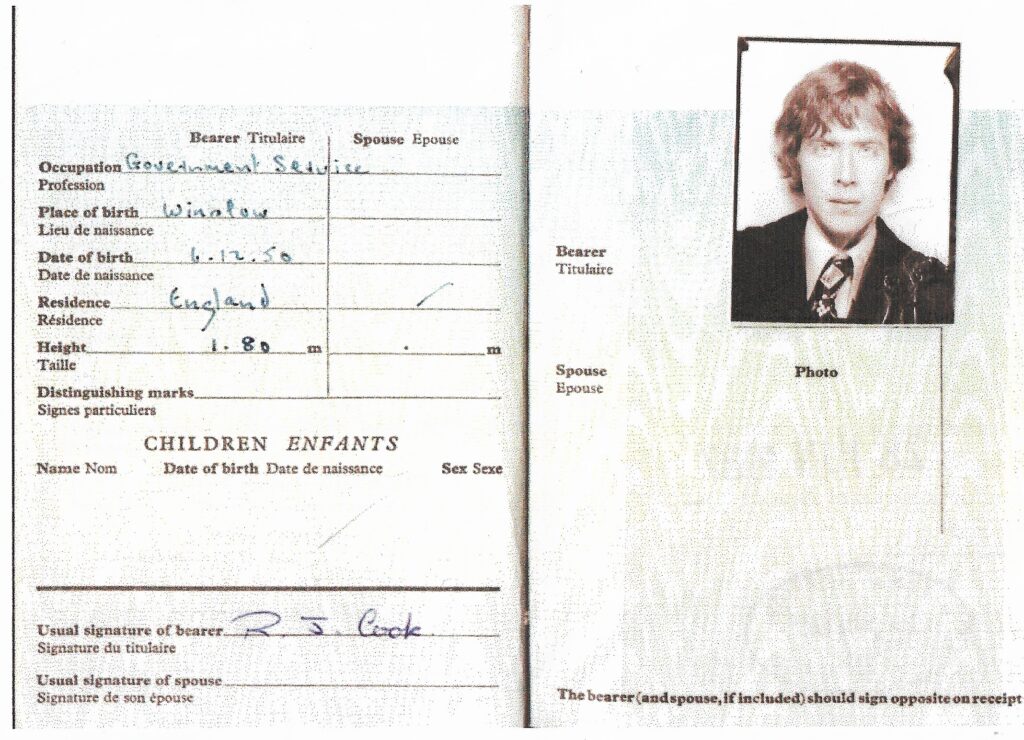
Never mind , there is always suicide. I never wanted to get this old. I thought being 21 was bad enough, that was 50 years ago.
But my major issue now, apart from state sanctioned determination to have me convicted for things I have not done, so getting me jailed or sectioned, is the fact that the police intervened in my transgender treatment. Morons at all levels of our society think transsexuals and transvestites are the same. It is very hard to explain anything to people who do not want to know. Transvestites simply enjoy female clothing usually for masturbation purposes.
Obviously, I like wearing classic female clothing and being viewed as a woman. I used to think it was nuts that I wanted my body to be female and would have loved to have been a mother. I was married to a very masculine woman who dressed like a man, after having retreated from two other Portsmouth women who I envied too much. I would never have had a rift with the woman I married if it had not been for what was happening to my sons. The eldest has had his life destroyed by vile police lies. The youngest, now 34 has been sectioned by parties I dare not mention – for legal reasons , because the police , and possibly MI6, are my only U.K readers..

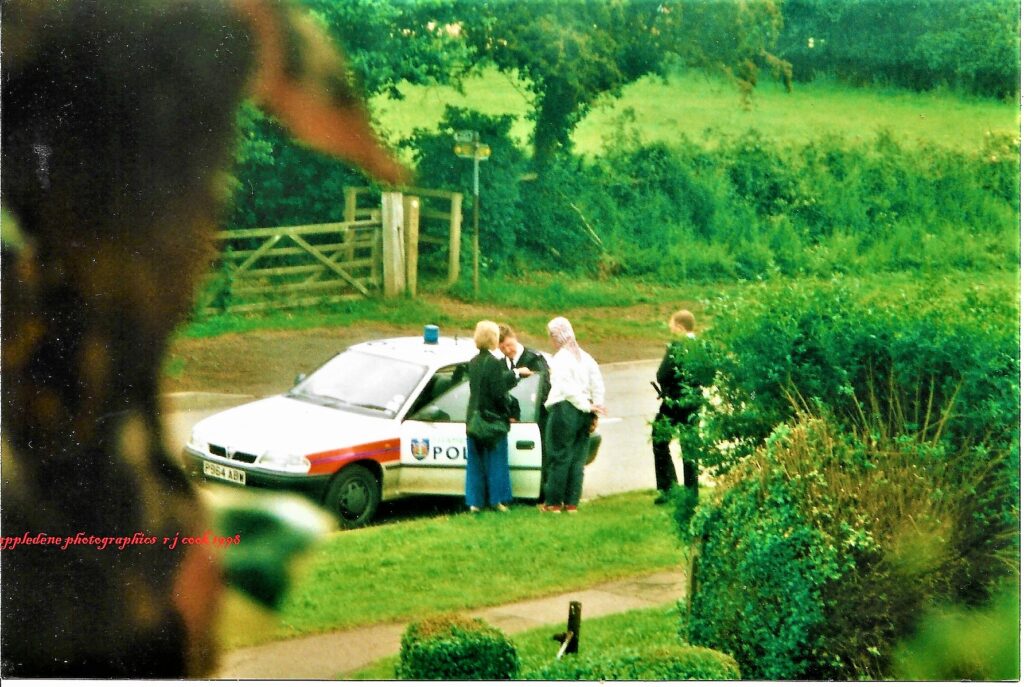
Meanwhile, although us transsexuals coming out is regarded as traumatic and brave, the GIC changed course for me after nearly 3 years of transgender recognition , away from recording my ‘secure female identity’ because the police saw an opportunity of protecting themselves from my criminal allegations by writing to my cop loving GP that I am mentally ill. This had been going on for some time, but as a result of a serious rows about me making excuses for my ex wife over Edward, Kieran became very cross. So I phoned the police warning again to deaf ears that Edward was at risk. Reading Police Station wasted no time informing my GP that I am nuts.
That was 2017, and they were already smarting from me being found not guilty of breaching a restraining order for alleging that certain senior police parties were guilty of conspiracy to pervert the course of justice, misconduct in public office and perjury. This verdict was based on the facts that I was telling the truth, but it was blocked from the press in the ‘public interest.’ This followed 7 Crown Court Hearings where I was berated for not pleading guilty. They even faked domestic violence allegations – which they will still not substantiate. I had no opportunity to defend myself. I was given no details. It transpired the police had fabricated evidence on behalf of alleged victims.
The police went on to recruit an ex partner to keep watch and report on me, following her Claire’s law application in 2014. In December 2017, anonymous typed letters, with peculiar alleged porn pictures and videos led to my remote home being staked out while I was either sleeping or doing night into morning trucking shifts. I was accused of sending them from Northampton, when I could prove being hundreds of miles away in my truck. No finger prints or other forensics were taken.
It was alleged that I was a ‘gay escort’ working for Kieran and his associates from an home based agency. Interesting words from a transsexual, who would either be lesbian or straight female. According to police, I sent them myself. But the police raided regardless in February 2018, with an immediate report to my GP insisting they inform the GIC. They did as ordered by the British Police State. The GIC ordered a psychiatrist to my home, named Ramsay, Ramsay arrived with a burly mental health nurse and medical student. It was all taken as proven, with police criminal lies, perverting the course of justice, were sent to health carers and ultimately the GIC.
I was declared a paranoid personality, schizophrenic with bi polar disorder, deluded and therefore my long overdue sex change surgery could not happen until I took zombifying anti psychotics. I waited years to come out and my sex change surgery is now 3 years overdue. I am not male and have no route to becoming one , and wouldn’t want one. Suicide is an option. I cannot abide this appalling secret police state. As for the baby killing NHS, I cannot express enough disgust. Their watchword is always about lessons will be learned, just like the police. There is nothing scientific about anything the GIC do. During Covid , we were exhorted to clap a seriously failing bureaucratic NHS. Now we must clap Ukraine. Remember, we live in a ‘democracy.’ This pathetic word is used with hypnotic and monotonous regularity.
R J Cook
November 2021
The Time Has Come – R J Cook
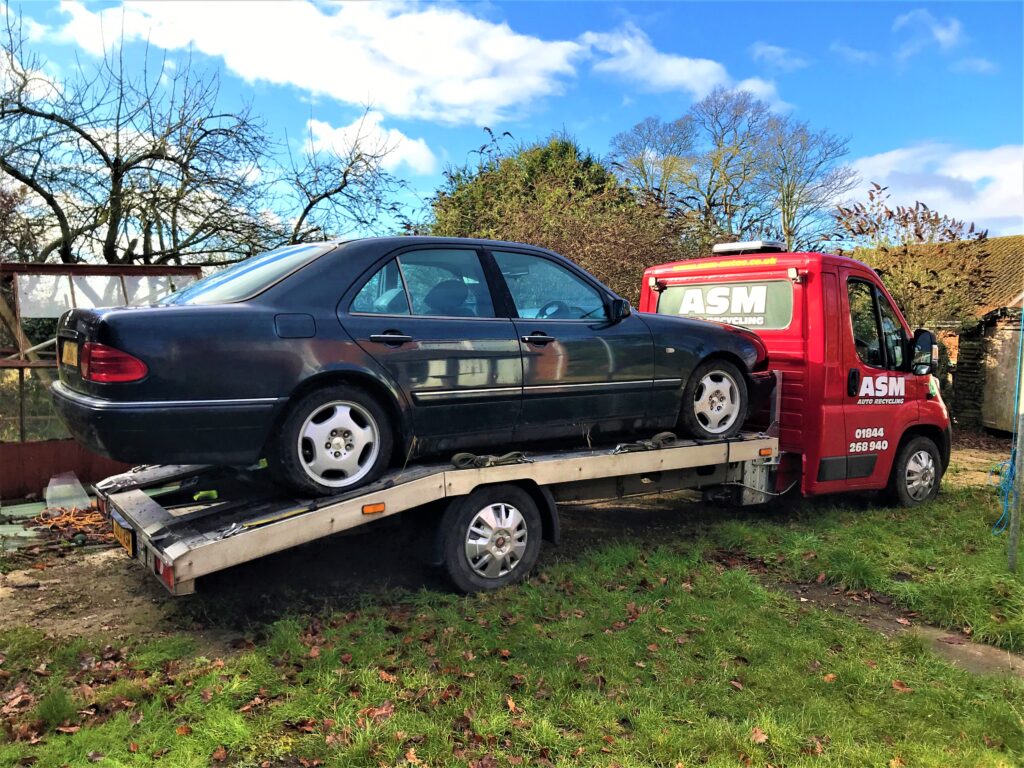

R J Cook
Dandelion wine recipes
Dandelion WineHow to Make Dandelion W…Homemade Dandelion W…“Dandelion Wine”Feedback
- AdsSee make dandelion wineDandelion Vineyards, `Enchanted Garden Of The Eden Valley` Riesling 12 Bottle Case 75Cl£163.80North and South WinesDandelion Vineyards, `Lioness Of Mclaren Vale` Shiraz 12 Bottle Case 75Cl£163.80North and South WinesDandelion Vineyards, `Pride Of The Fleurieu` Cabernet Sauvignon 12 Bottle Case 75Cl£163.80North and South WinesDandelion Vineyards – Pride Of The Fleurieu Cabernet Sauvignon 2019 75Cl Bottle£12.62TheDrinkShopFree shippingDandelion Vineyards, `Lionheart Of The Barossa` Shiraz 12 Bottle Case 75Cl£169.99North and South Wines
See buy demijohn
Wilko Demijohn Glass Container 5L
£9.00Wilko.com2 Clear Glass Demijohn (5 Litres) Ideal For Home Brewing Wine/Cider
£9.00eBay UKGlass 1 Gallon Demijohns
£15.99Amazon UKFree shippingGlass Demijohn 5 Litre With Smart 2 Piece Airlock And Bung
£21.89Amazon UKFree shippingGlass Fermenter With Swing Stopper, 5Litres Demijohn/Fermenter
£16.99Amazon UKFree shippingPack Of Two 5L Demijohn For Wine Making/Storage With Tube, Bung And Airlock
£22.99Amazon UKFree shippingDemijohn 1 Gallon/5Ltr Clear Glass Demijohn
£75.00Etsy
- How to Make Apple Wine (with Pictures) – wikiHowFermenting the Wine Download Article
- Boil 2.25 litres (0.59 US gal) of water and 900 grams (2.0 lb) of sugar. Use a pot that is big …
- Add the apples and boiling water to your fermenter. First, put the chopped apples in a fine …
- Pour 2.25 litres (0.59 US gal) of cold water into the fermenter. Use cold water to bring the …See full list on wikihow.com
- Apple Wine Recipe – Simple & Rich Apple Winehttps://homebrewanswers.com/apple-wine-recipe10/09/2017 · Apple Wine Ingredients 4kg Apples peeled and cut up into small chunks/cubes just prior to making wine to avoid the apples going brown 4.5 litres Water 900g Sugar 1/2 – 1 tsp Acid Blend (if you are using tart apples use less acid) 1 tsp Yeast Nutrient 1/2 tsp Pectic Enzyme 1/4 tsp Wine Tannin 1 …
- Gooseberry Wine Recipe – Fantastic White Wine
- homebrewanswers.com
- Elderberry Wine Recipe – A King Among Fruit …
- homebrewanswers.com
- Pineapple Wine Recipe – Tropical Tasting Wine
- homebrewanswers.com
- Simple & Easy Plum Wine Recipe
- homebrewanswers.com
- Apricot Wine Recipe – Summery Pink/White wine
- homebrewanswers.com
- Dandelion Wine Recipe – A Taste Of Sunshine
- homebrewanswers.com
- People also askHow do you make apple juice wine?What are the ingredients in apple wine?Is apple wine easy to make?How to make apple wine with yeast?Feedback
- Apple Wine Recipe – Permaculture magazinehttps://www.permaculture.co.uk/readers-solutions/apple-wine-recipe27/10/2011 · Wash and cut up the apples, skins, brown patches and all. Put in large bucket and cover with water. Add the pectolase enzyme if you’re using it and stir well. Make sure you keep the apples pressed down under the water with plate and weight. Cover and leave for 8 hours or more, overnight would be good.
- Estimated Reading Time: 7 mins
- Homemade Apple Wine – Practical Self Reliancehttps://practicalselfreliance.com/apple-wine
- 4.3/5(37)
- Estimated Reading Time: 8 mins
- Servings: 1
- Total Time: 615 hrs
- Instructions
- Start by removing about 1 quart of juice (4 cups) from the gallon, and then pour the other 3 …
- Place 2 cups of the removed juice in a small saucepan, and set the other 2 cups aside for …
- Gently warm the juice in the saucepan. Add all the ingredients (except yeast) and stir to …See full list on practicalselfreliance.com
- Making Apple Wine – Homemade Wine Making Guidehttps://homemade-wine-making-guide.com/making-apple-wineWhen making apple wine be sure to use only firm, ripe apples. Make sure there are no worms. Cut into small pieces to extract more juice. Place them in nylon straining bag and mash or press lightly to release juice. Keep all pulp in straining bag, tie off and place in primary fermenter. Stir in all other ingredients EXCEPT yeast.
- Best of Make Apple Winebing.com/imagesHow to Make Easy Homemade Apple Wine | DelishablyMake Apple Wine at Home (Recipe) – Wine On My TimeHow to Make Easy Homemade Apple Wine | DelishablyHow to Make Easy Homemade Apple Wine | DelishablyMy Way Of Making Apple Wine | Apple wine recipes, Homemade …See allSee all images
- How to Make Apple Wine – Homebrewinghttps://www.homebrewing.org/How-to-Make-Apple-Wine_ep_202-1.html* 1-1/2 Teaspoon of Acid Blend * 1/4 Teaspoon of Wine Tannin * 1/8 Teaspoon of Ascorbic Acid * 1 Campden Tablet (crushed and dissolved) A little later, you will also be adding 1 Package of Lalvin EC-1118 for every batch up to 5 gallons in size. All of the above items can be found in the wine making section of our website. BASIC PROCESS 1.
- Make Apple Wine at Home (Recipe Guide) – Wine On My …https://wineonmytime.com/make-apple-wine-at-home-recipe30/12/2019 · The final step is to add the mixture in a cold and dark place and wait. After about 21 days, your apple wine will be done and ready to drink. Final Word: Apple Wine. Every wine lover should try making apple wine at least once. It’s a great drink, easy to create, and it’s an experience you have never had before.
- Estimated Reading Time: 4 mins
- Allotment Heaven: Apple wine easy recipehttps://allotmentheaven.blogspot.com/2011/07/apple-wine-easy-recipe.htmlWash the apples, quarter and remove the core, place in fermentation barrel until almost full, discarding any bruised bits. 3. Fill with boiling water. It doesn’t take all that much since the barrel is so full of apples. 4. Put the lid on and leave for a few days, stirring twice daily. 5.
- Wineladybird – Learn About Wine!https://wineladybird.com/homemade-fresh-apple-wine-recipeWineladybird – Learn About Wine!
- How to Make Easy Homemade Apple Wine – Delishablyhttps://delishably.com/beverages/How-to-make-easy-homemade-apple-wine
- Estimated Reading Time: 4 mins
- Pour off extra. To start, make sure to your funnel is very clean. Open the apple juice and pour …
- Add sugar. Put in the funnel and pour the sugar in. Yeast feeds on sugar and emits alcohol in …
- Shake. Put the top on and shake it until the sugar is dissolved. Read More From Delishably. …
- Add yeast/ Pour the yeast in, put the top on, and tilt the bottle upside down and right side up …See full list on delishably.com
- Videos of Make Apple Winebing.com/videos12:25How to Make Apple Wine ( Recipe)55K viewsAug 25, 2014YouTubeThe Wine Brewer14:06How To Make Apple Wine25K viewsSep 29, 2018YouTubeExploring John5:31Making Apple Wine: 1 Gallon6.6K viewsMay 23, 2020YouTubeDIY Fermentation8:20How To Make Apple Wine | Video 143 | Apple Wine At Home | Travel Chef4.9K views7 months agoYouTubeTravel Chef37:41Making Homemade Apple Wine57K viewsFeb 12, 2016YouTubebeorachaSee more videos of Make Apple Wine
- Related Searches for make apple wine


December 29th 2021.







